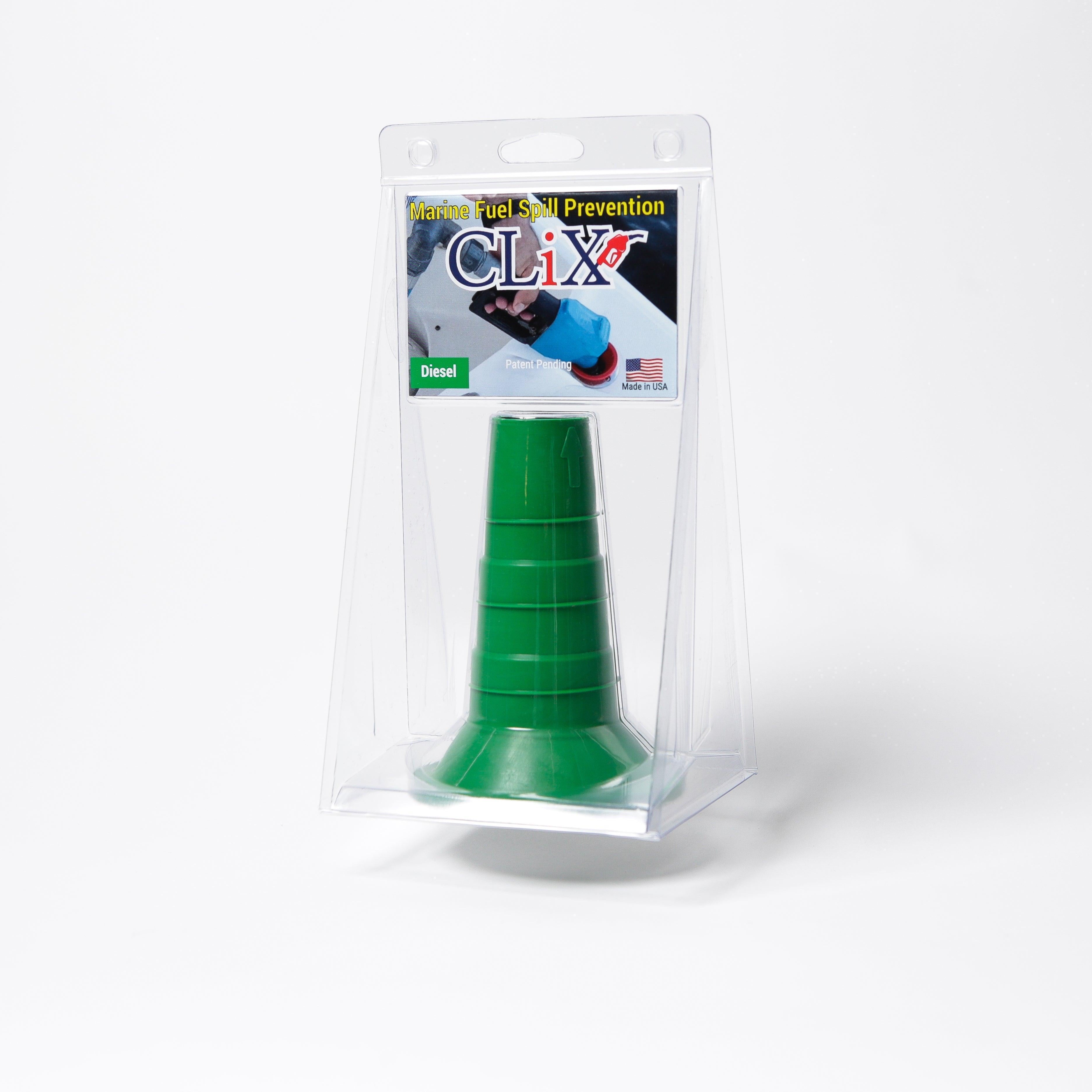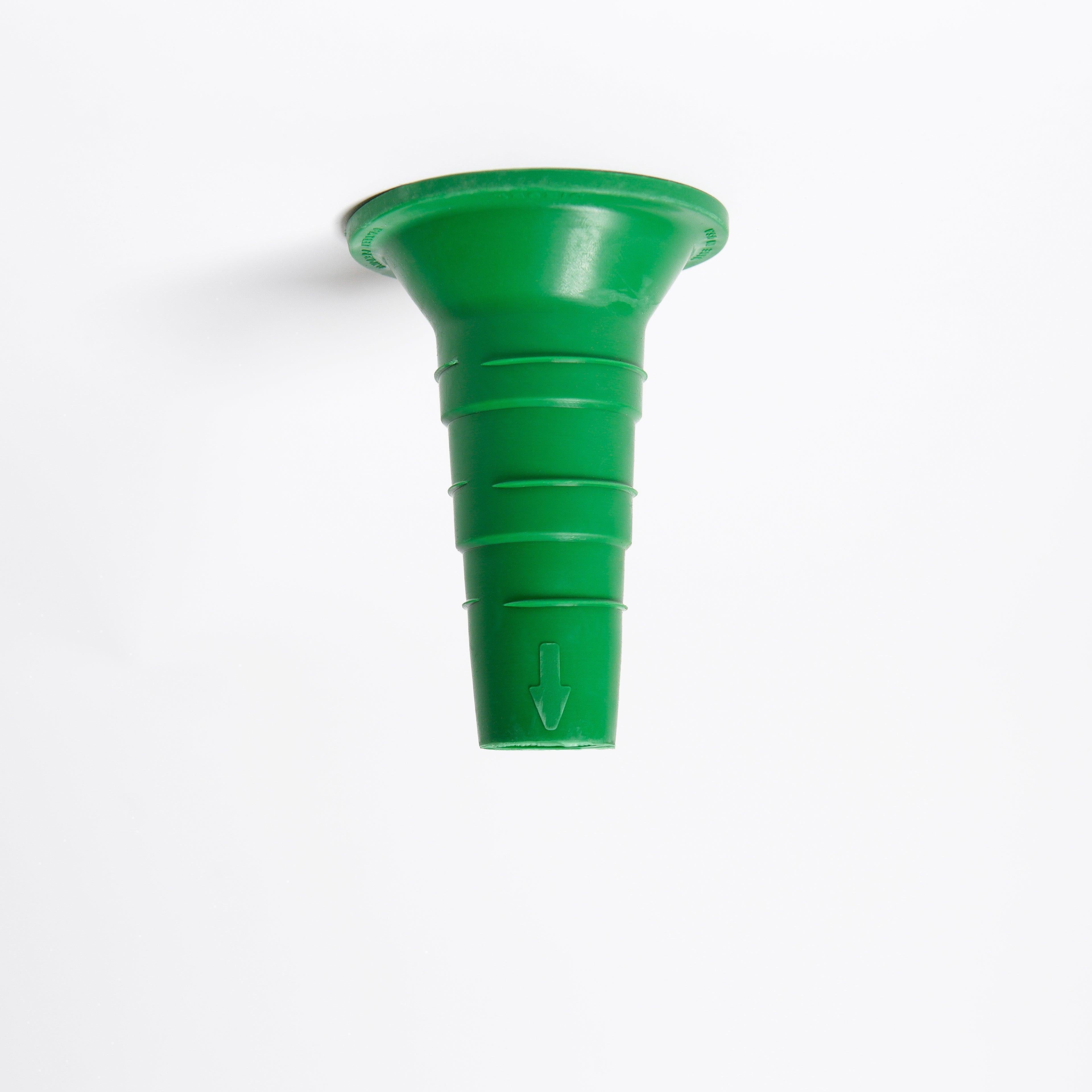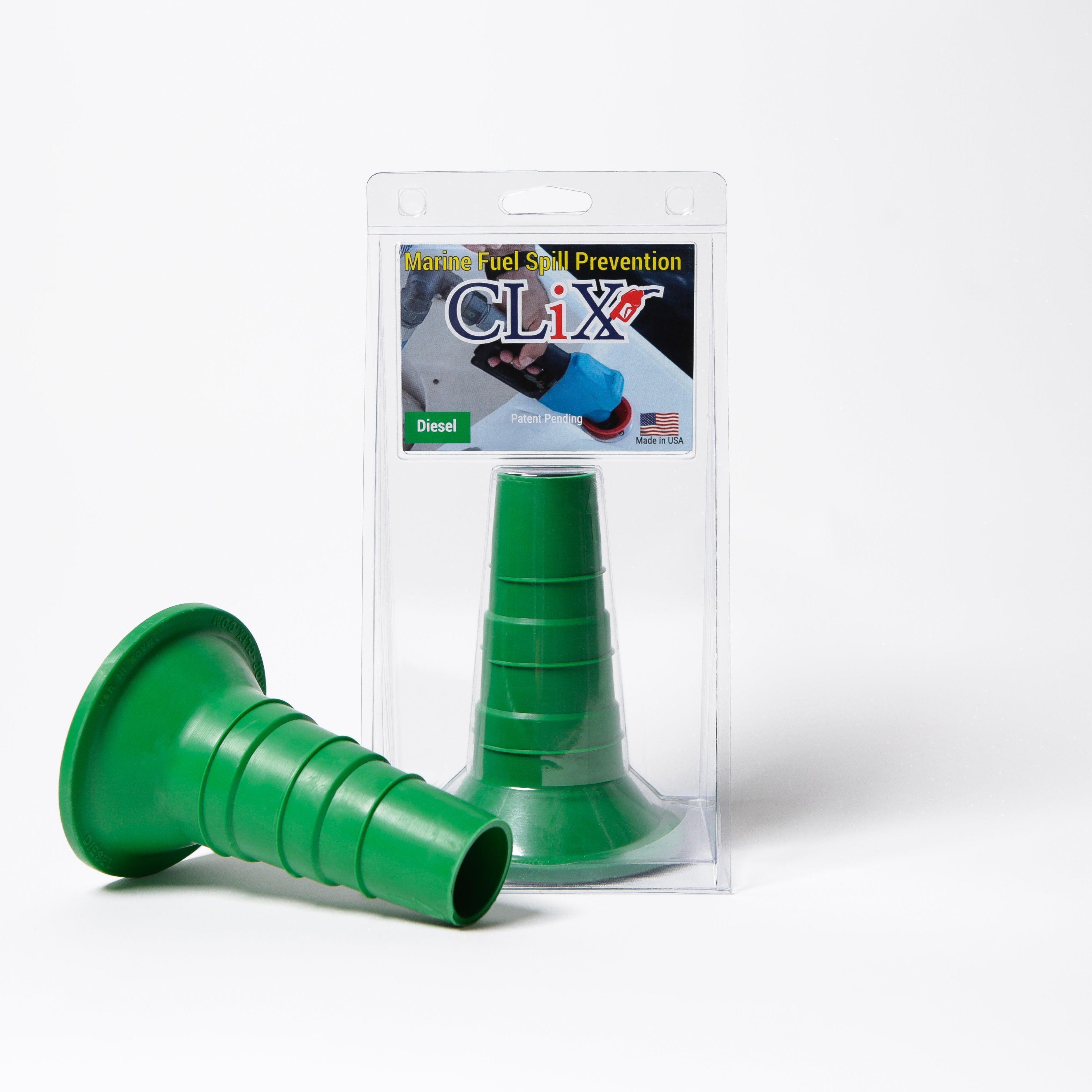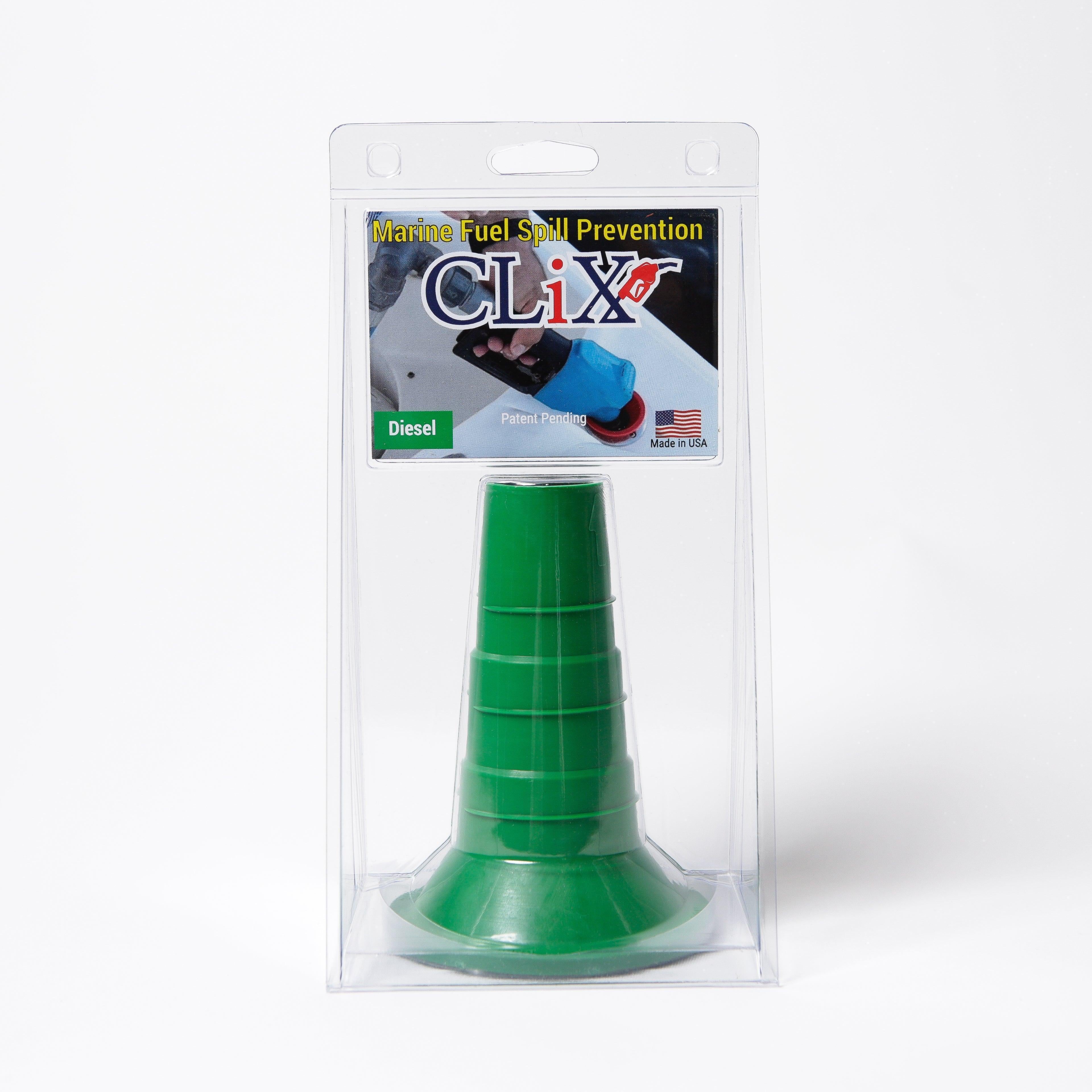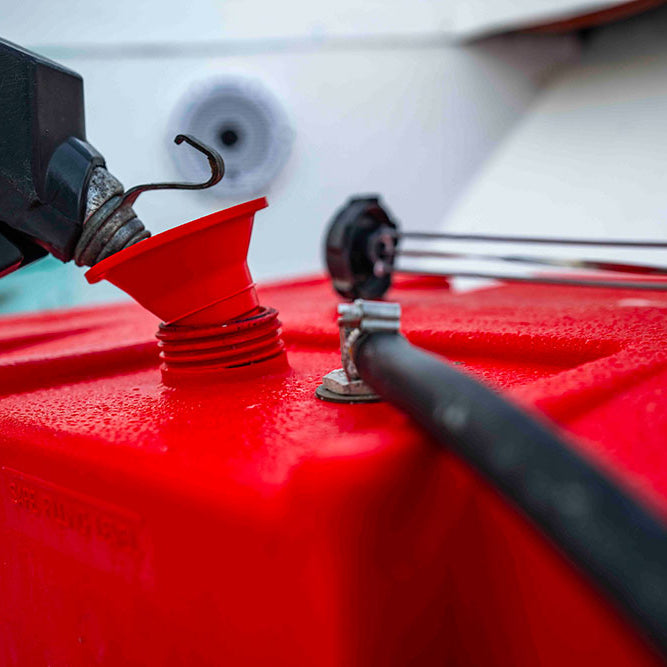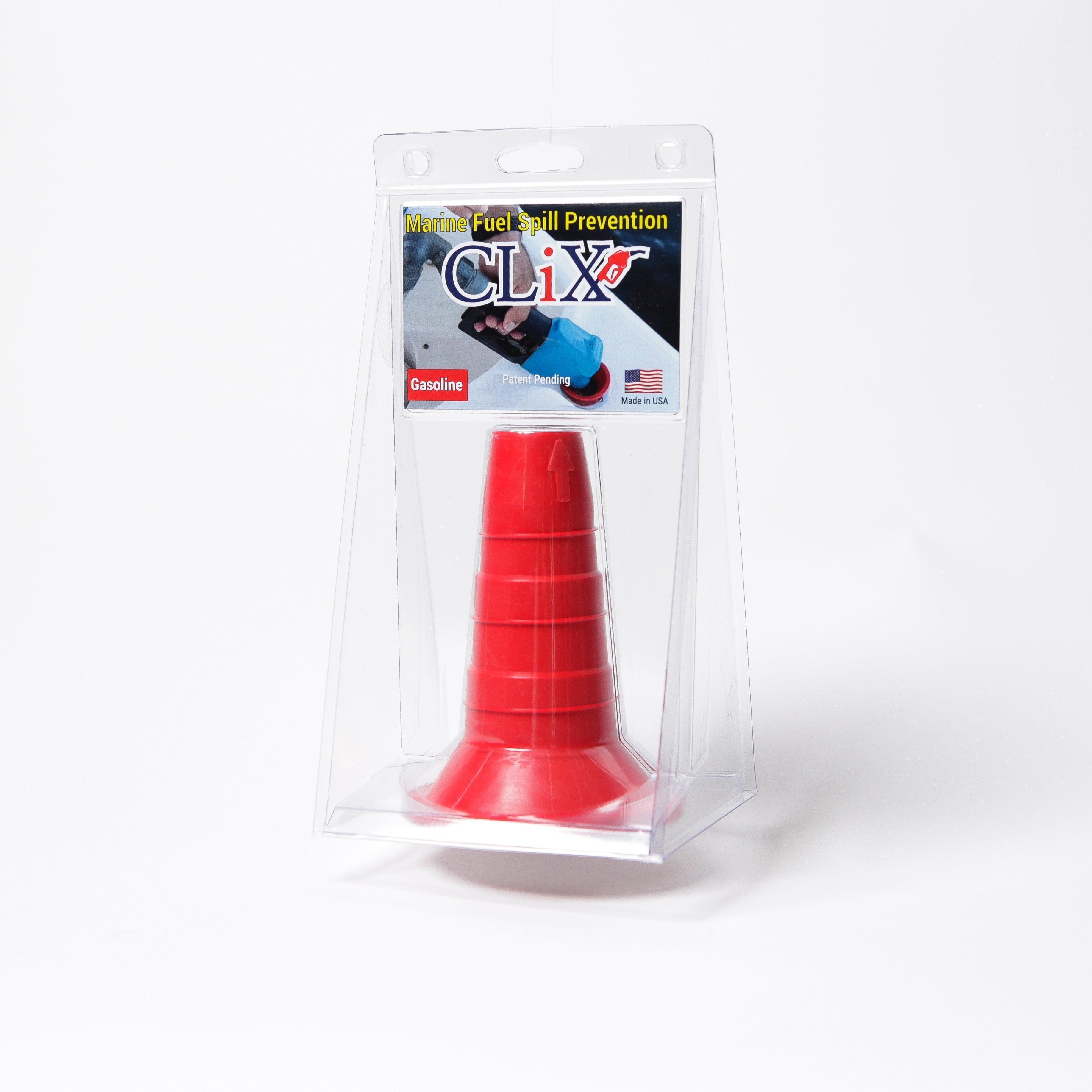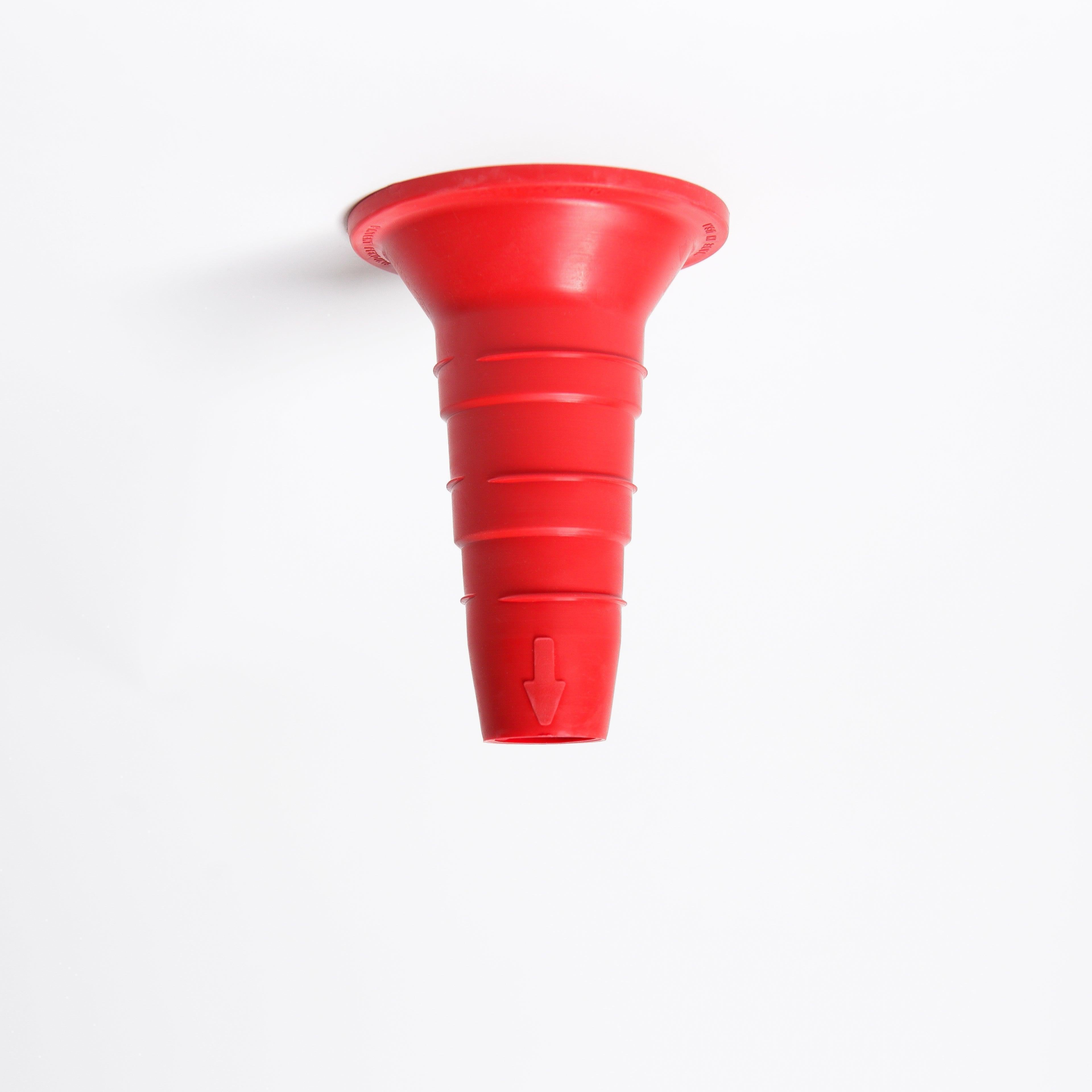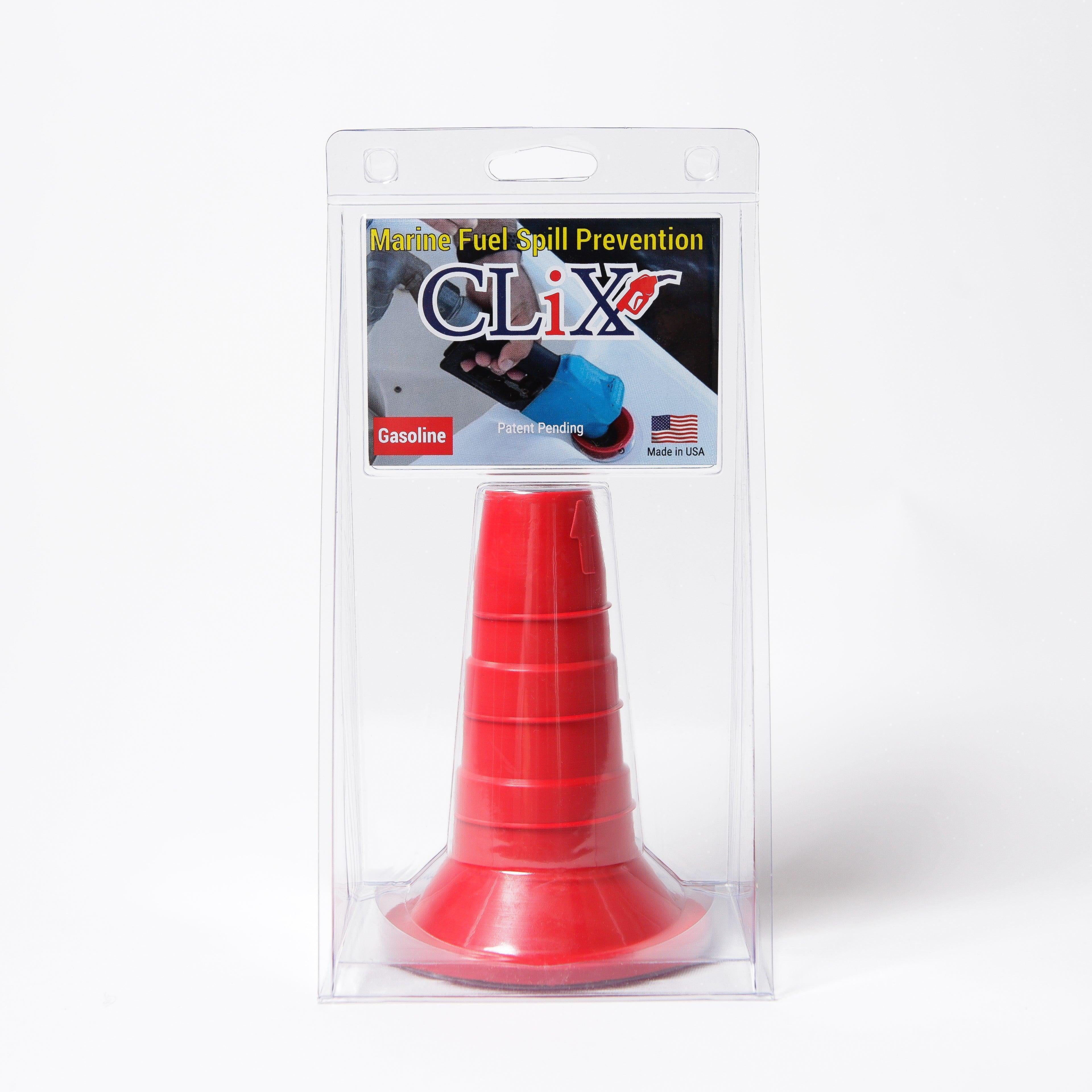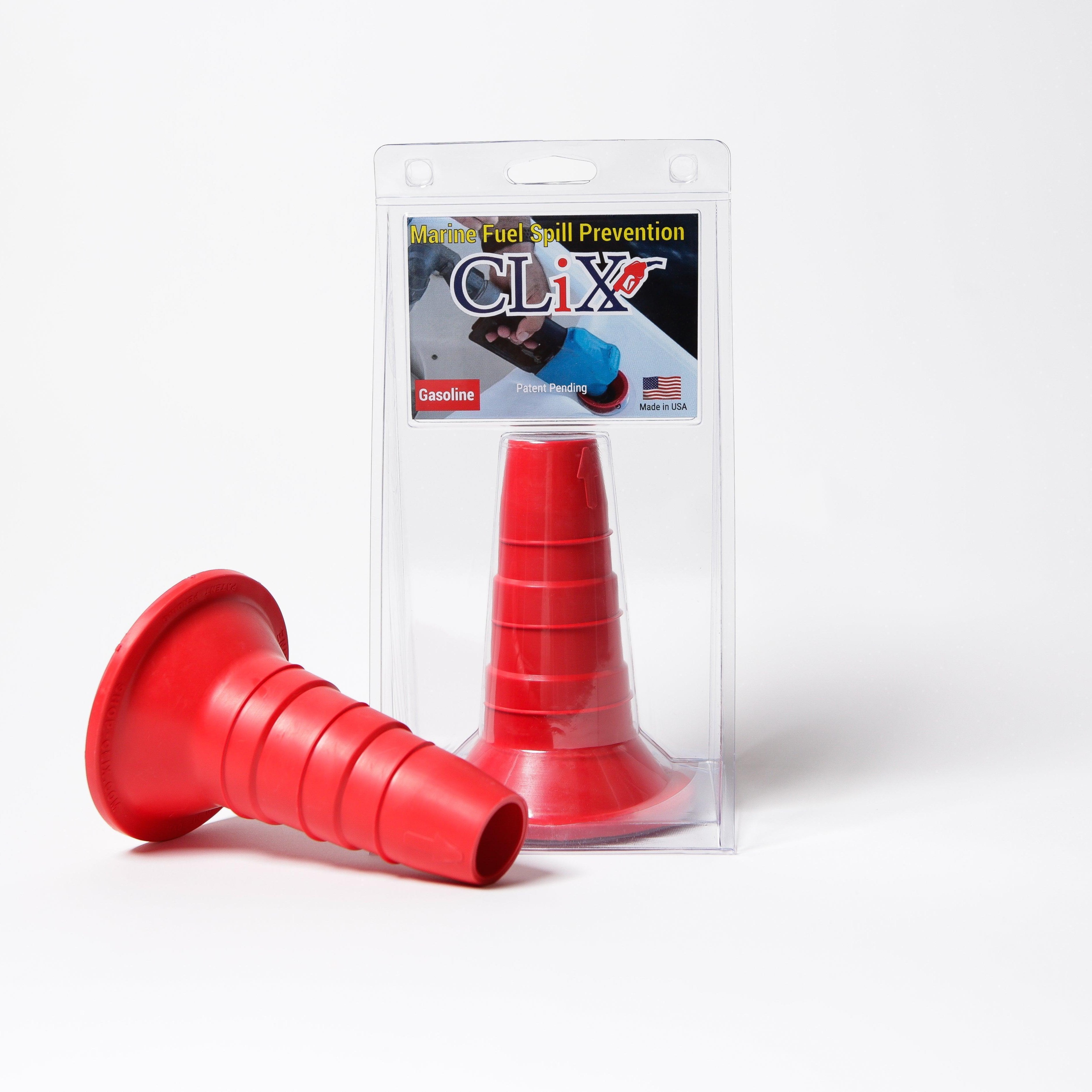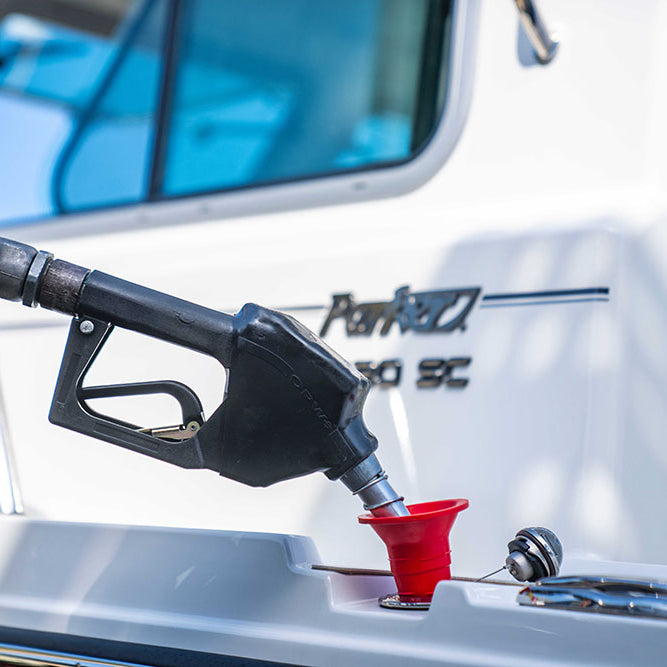Alright, let's get straight to the point. If you're wondering where you should fill up a portable gas can, the answer is simple and non-negotiable: on the ground.
Always place your container on the pavement, several feet away from your vehicle. You should never, ever fill a gas can while it’s sitting inside your car, trunk, or truck bed. This one simple step is your best defense against a dangerous fire caused by static electricity.
The Critical Importance of Grounding Your Gas Can
The whole reason we put the can on the ground is to deal with an invisible threat: static electricity.
Think about shuffling your socks across a carpet and then zapping a doorknob. It's a tiny spark, right? Now, imagine that same spark happening next to a cloud of flammable gasoline vapor. The outcome is explosive. Placing the fuel can directly on the ground creates a path for any static charge to safely flow away into the earth, effectively neutralizing the risk.
Why Your Vehicle Is a Danger Zone
Filling a gas can inside a vehicle—especially one with a plastic truck bed liner or a carpeted trunk—is a recipe for disaster. These surfaces are insulators, meaning they trap static electricity. As gasoline rushes into the container, the friction builds up a static charge. With nowhere to go, that charge can become strong enough to create a spark and ignite the fumes.
On top of that, a car that was just driven has plenty of hot surfaces. Your exhaust pipe and catalytic converter can get incredibly hot, easily hot enough to ignite gasoline vapors. That's why safety experts recommend placing the container at least five feet away from your vehicle. It’s a simple rule, but it’s one you can’t afford to ignore.
These safety principles are crucial everywhere, but they become even more important in specialized settings like boating. You can dive deeper into this topic by reading our guide on marine fuel fill systems.
To make this crystal clear, I've put together a quick cheat sheet on where to place your gas can.
Gas Can Positioning Quick Guide
This table breaks down the right and wrong way to position your fuel tank. Sticking to the "correct" column is the key to staying safe.
| Action | Correct Method (Safe) | Incorrect Method (Dangerous) |
|---|---|---|
| Positioning | On the ground, level, and at least 5 feet from your vehicle. | Inside a vehicle, in the trunk, or on a truck bed. |
| Static Safety | Allows static electricity to ground safely. | Insulates the can, allowing dangerous static to build up. |
Remembering this simple guide every time you're at the pump can prevent a serious accident. Always think "ground first" before you grab the nozzle.
A Step-by-Step Guide to Filling Gas Cans Safely
Knowing where to fill a gas can is just the first step. The real key to safety is knowing how to do it correctly every single time. Following a simple, consistent process turns what could be a dangerous task into a quick and routine chore. Let's walk through it, so you can feel confident and take the guesswork out of the equation.
First things first: turn off your car engine. Before you do anything else, take the gas can out of your vehicle and place it firmly on the ground. This isn't just a suggestion—it's your best defense against a static electricity fire.
This image lays out the essential gear and the right way to position yourself for a safe fill-up.
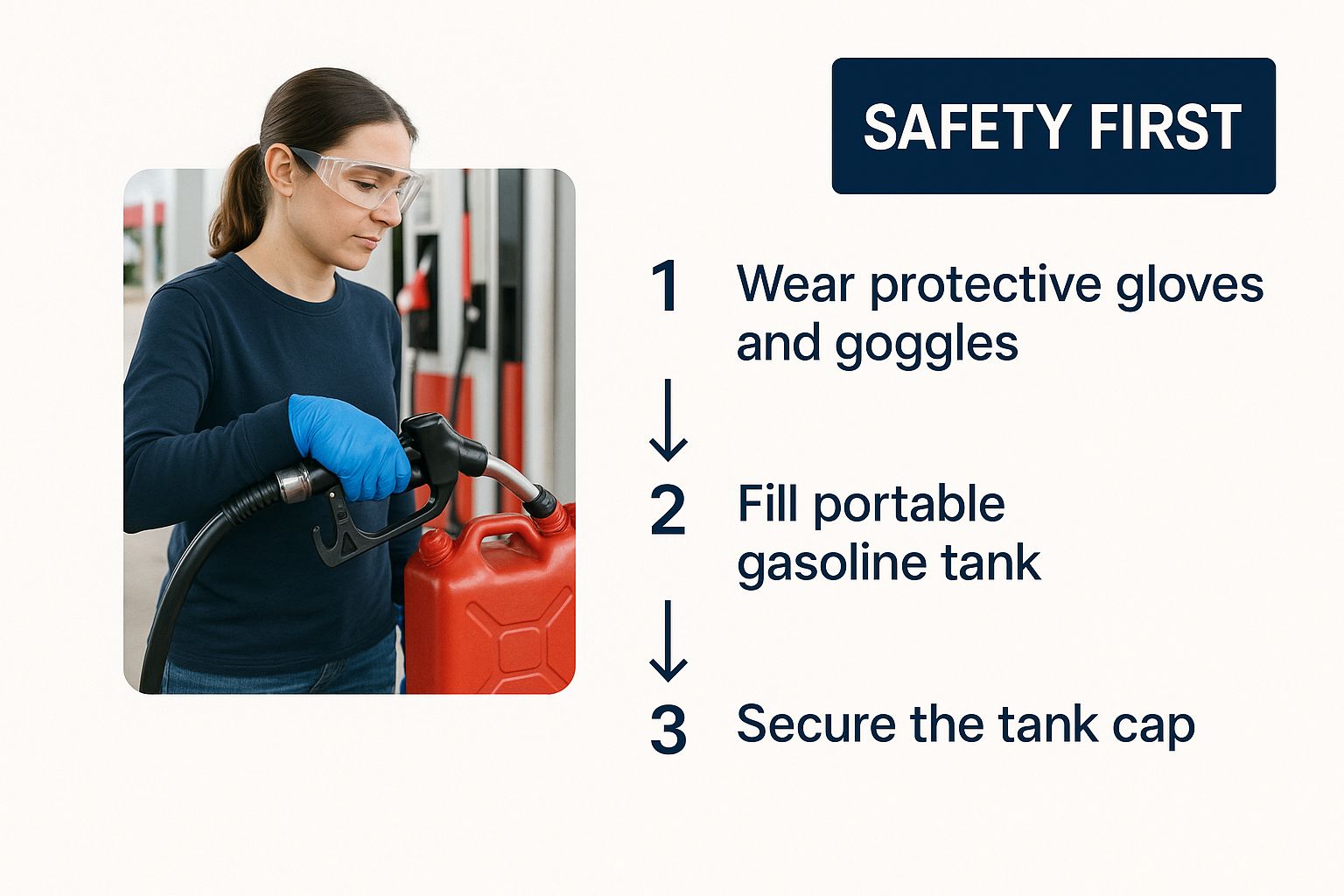
As you can see, safety is about more than just your location. It's about having the right gear and using the proper technique, no exceptions.
The Correct Filling Procedure
With your can securely on the ground, you're ready to start. The trick is to stay in control and prevent any splashes or spills.
-
Remove the Can’s Cap: Twist off the cap and place it somewhere safe where it won’t roll away or get lost.
-
Insert the Nozzle: Put the pump nozzle deep into the can's opening. Make sure the metal part of the nozzle is touching the rim of the opening. This continuous contact is crucial for grounding the can and stopping static electricity from building up.
-
Fill Slowly: Don't just jam the trigger. Squeeze it gently for a slow, steady flow. Filling too fast can cause gasoline to splash back out, which is both wasteful and dangerous.
-
Listen and Watch: Pay close attention. You'll hear the sound change as the can gets full. Keep your eyes on the fuel level.
The golden rule here is to never fill a gas can more than 95% full. Gasoline needs room to expand when it gets warm. That extra 5% of empty space prevents pressure from building up and forcing fuel out of the spout on a hot day.
Sticking to this process is non-negotiable, especially for boaters where the risks are even higher. For more on that, check out our complete boat fueling safety playbook.
Once you hit that 95% mark, let go of the handle, remove the nozzle carefully, and screw the cap on tight. Give the can a quick wipe with a paper towel to catch any drips before putting it back in your vehicle.
Understanding the Hidden Dangers of Fueling
Following safety rules when you're handling gasoline isn't just about ticking off boxes on a list. It’s about knowing what real, invisible dangers you're up against and why those rules exist in the first place. The most obvious risk isn't just a spill; it's the sudden, violent threat of a fire sparked by static electricity.
Think about the zap you get after walking across a carpet and touching a metal doorknob. It's a tiny, harmless spark. Now, picture that same spark happening right next to a cloud of gasoline vapor, which is almost impossible to see. That's not a small zap—that's a flash fire. This is exactly why you always place your gas can on the ground before filling. It creates a safe path for any static charge to discharge into the earth, preventing a potential disaster.
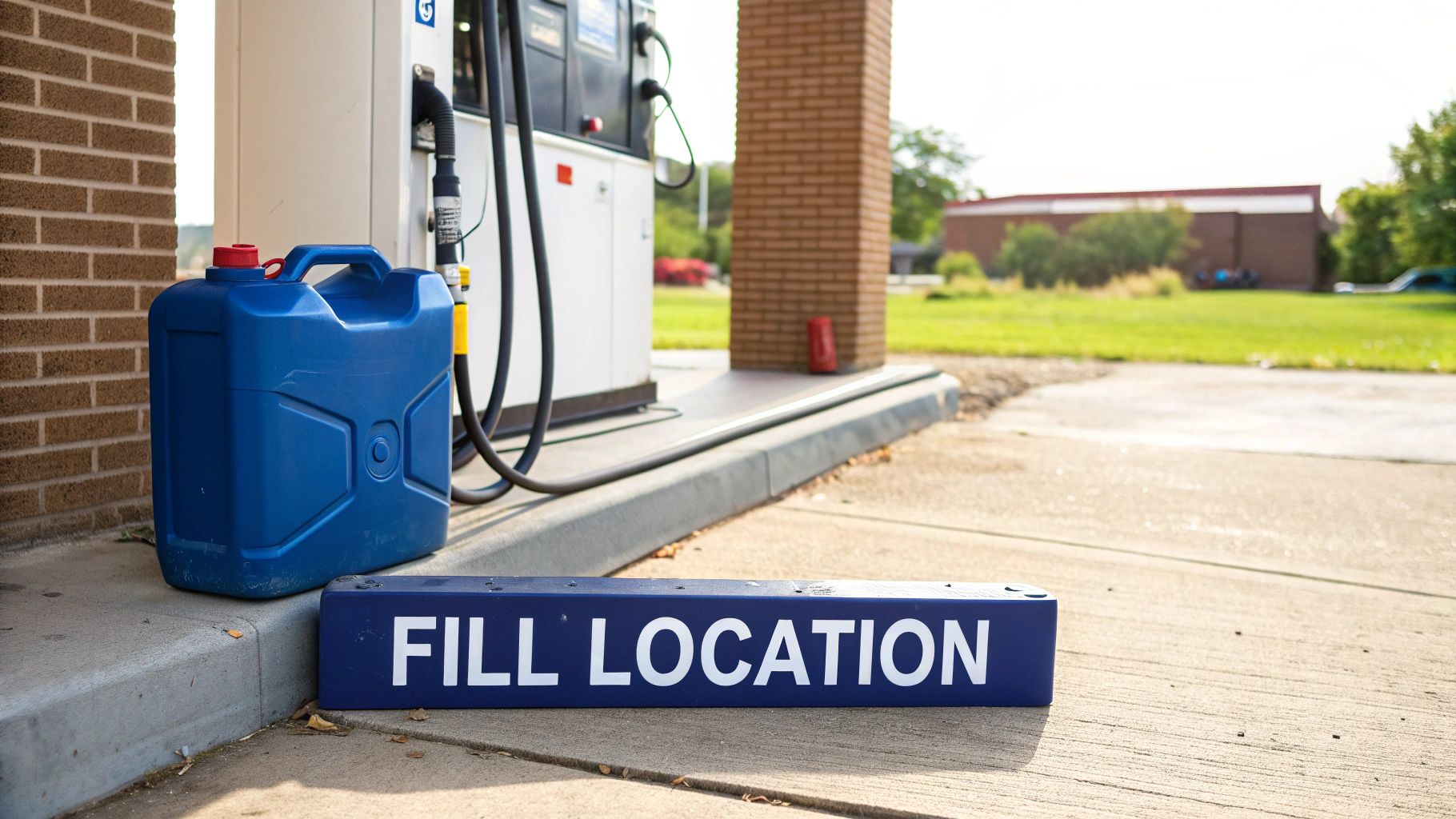
Beyond the Fire Risk
While an explosive fire is the most immediate danger, it's not the only thing to worry about. Gasoline vapors themselves are full of harmful chemicals, and breathing them in is a serious health risk.
Gasoline vapors are heavier than air. This means they don't just float away; they can sink and collect in low spots like the trunk of your car or the bilge of a boat, creating a hidden danger long after you've screwed the cap back on.
On top of that, every little spill, no matter how small, adds up and damages the environment. These combined risks are why knowing precisely where and how to fill a portable gas tank is so critical. A detailed study on the topic showed that even normal, everyday fueling leads to benzene exposure and financial loss from wasted fuel. You can dig into the full findings on fuel vapor emissions to see the broader impact.
When you cut corners, you're opening yourself up to three major threats:
- Static Fire: An instant and dangerous fire caused by a stray spark.
- Vapor Inhalation: Breathing in toxic fumes that can cause long-term health problems.
- Environmental Spills: Contaminating soil and water, even with just a few drops of gasoline.
Every single safety step is there for a reason—to protect you from these very real consequences.
How to Choose the Right Portable Gas Can
Knowing where to fill up your portable gas tank is important, but it’s only half the story. The real starting point for safety is using the right gear. It’s a huge mistake to just grab any old container from the garage—you absolutely have to use a government-approved can made specifically for gasoline.
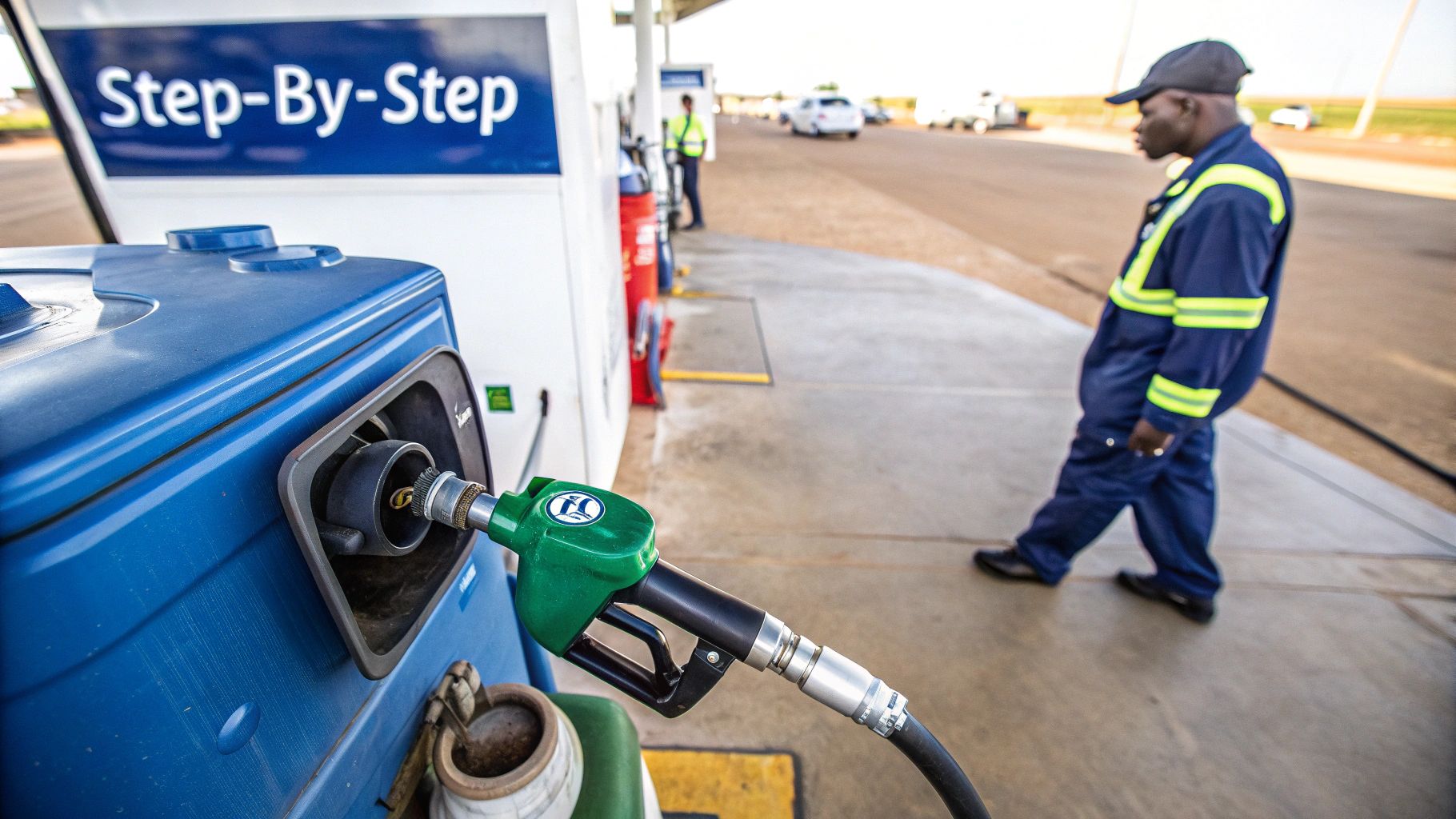
These special cans are typically made from materials like high-density polyethylene, which is designed to stop static electricity from building up. Never, ever use something like a milk jug, a glass bottle, or an old bucket. They can’t handle the pressure from gas fumes, break down quickly, and can even create a dangerous static spark.
Key Safety Features to Look For
Modern gas cans aren't just simple containers; they come with crucial safety features built right in. When you're picking one out, make sure it includes these two things:
- A Flame Arrestor: This is a small screen, usually metal or plastic, sitting right inside the spout. Its job is to stop a flame on the outside from igniting the fumes on the inside, preventing a potential explosion.
- A Self-Venting Spout: This clever feature automatically lets out pressure as the temperature rises or falls. This stops the can from bulging and potentially spilling fuel everywhere.
Also, pay attention to the color-coding system—it's there for a reason. Red cans are for gasoline, yellow is for diesel, and blue is for kerosene. Following this simple rule is an easy way to avoid a costly and dangerous mix-up.
Choosing the right container is the first step in a safe fueling process. The global market for portable gasoline tanks is growing rapidly, with a valuation over $1.3 billion in 2022. This growth underscores the universal need for standardized, safe equipment for everything from lawnmowers to boats.
At the end of the day, the safety features on your can are just as critical as where you decide to fill it. If you're someone who often needs to fuel larger equipment, getting to know the specifics is vital. For a deeper dive, check out our detailed article on the different types of boat fuel tanks.
Common Fueling Mistakes You Must Avoid
Knowing the right way to fill a portable gas tank is only half the battle. Just as important is knowing what not to do. Many well-intentioned people create incredibly dangerous situations at the pump simply because they're unaware of a few critical safety rules. A gas station isn't the place to learn from your mistakes.
One of the most common—and hazardous—errors is filling a gas can while it's still inside your car or sitting on a plastic truck bed liner. Think of those surfaces as insulators. They prevent the static electricity that naturally builds up from grounding safely. As fuel rushes into the can, that static charge can create a spark, which is all it takes to ignite gasoline vapors.
Other Critical Errors to Prevent
Static electricity is a big one, but a few other bad habits can also put you at risk. It’s vital to get these right every single time you fill up.
- Overfilling the Container: Never fill a gas can all the way to the top. You need to leave at least 5% of the space empty. This "headspace" gives the fuel room to expand when temperatures rise, preventing pressure from building up and causing a leak.
- Leaving Your Engine Running: This one’s a classic. A running engine is a source of both heat and potential sparks from the exhaust and electrical system. Always shut your vehicle off completely before you even open the gas cap.
- Using a Cell Phone: While the actual risk is debated, fuel companies universally ban cell phone use at the pump. It’s a simple precaution against any potential spark from the device's electronics. For the sake of safety, it’s a small rule that's easy to follow.
- Smoking or Creating a Flame: It might seem obvious, but it has to be said: never, ever smoke, light a match, or use a lighter anywhere near a gas pump. The fumes are highly flammable and can ignite from a surprising distance.
The most dangerous fueling habits usually come from being distracted or in a hurry. Treat every trip to the pump with the focused attention it deserves. A few extra seconds of care can prevent an accident and keep you—and everyone around you—safe.
Answering Your Top Fuel Safety Questions
Alright, so we've gone over the core safety rules, but let's get into the nitty-gritty. It's the real-world situations and the "what-if" questions that truly build good habits. Let's tackle some of the most common questions I hear all the time.
Why Can't I Fill My Gas Can in My Truck Bed?
This is a big one, and I see people make this mistake constantly. It seems convenient, but it's incredibly dangerous. Think of your plastic truck bed liner like the rubber sole on a shoe—it’s an insulator. It stops static electricity from safely reaching the ground.
As gasoline rushes into the can, the friction builds up a static charge. If the can is sitting on that plastic liner, the charge has nowhere to go. It just builds and builds until it’s strong enough to create a spark. A tiny spark is all it takes to ignite gasoline vapors, and you can guess what happens next. The only truly safe way is to place the can directly on the pavement. This grounds the can and gives that static charge a safe path away, eliminating the fire risk.
How Full Should I Actually Fill a Gas Can?
Never, ever fill a portable fuel tank completely to the brim. The golden rule is to stop at 95% full. Gasoline needs room to expand when it gets warm, just like any other liquid. That little bit of empty space at the top, called "headspace," is your safety buffer.
Overfilling a gas can is asking for trouble, especially on a hot day. The pressure can build up enough to warp the can or even force fuel right out of the spout, creating a dangerous spill. The 95% rule gives the fuel the space it needs to expand and contract without turning your gas can into a hazard.
What Is the Safest Way to Transport a Gas Can?
Once you've filled up, getting it home safely is the next step. First, double-check that the cap is screwed on tight to prevent any leaks or vapors from escaping.
Always transport the can in an upright and secure position so it can't tip over. The trunk of your car is usually the best spot. It’s also smart to crack a window open to keep fresh air circulating, which prevents any flammable vapors from building up inside your vehicle. And please, don't leave a full gas can sitting in a hot, sealed car for a long time.
Knowing how to handle fuel on land is one thing, but it's just as important to be prepared for emergencies on the water, like knowing what to do if you run out of gas at sea.
For a truly stress-free and spill-free experience on the water, trust CLiX Fueling Solutions. Our innovative system automatically stops fuel flow when your tank is full, protecting your boat and the environment. Learn more about how CLiX can transform your fueling routine.

